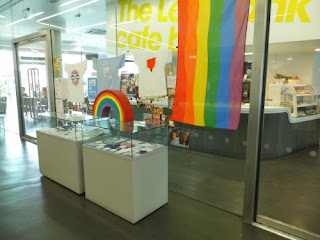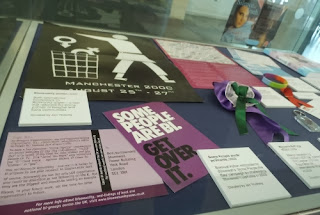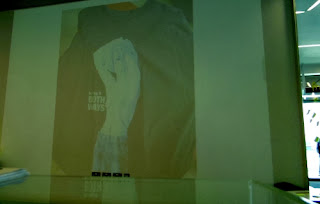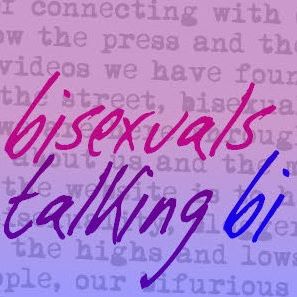There are a lot of things I meant to blog about in 2013 but the raw
doing things that need doing of tackling the most pressing problem got in the way. In the winter months I hope to write up a few of these, having made a start this week with the review of the year and writeup of the Charles Dickens talk at LGF. Today I'm going to look back to August 2013 and the
Manchester People's History Museum LGBT Exhibition for Manchester Pride 2013. This one will be decorated with photos as I was being a bit snap-happy with my camera at the time.
In March 2013, when planning the People's History Museum's summer events programme, it seems the suggestion came forward to run an LGBT history tour, to coincide with Manchester Pride at the August bank holiday weekend. The people's history of Manchester, after all, includes a whole series of stories of our place as a key city in the country's LGBT history.
But as a social history it is fleeting and ephemeral, with some of the tales of bars and battles captured by the rainbow plaques on our city streets and many more missing, let alone how they piece into the jigsaw of the battle for liberation and equality on a wider level. If you didn't live through it all back then, then in a 2013 where one of the six parliamentary divisions on same-sex marriage didn't even go to a vote because
well it's obviously going to pass why bother, it's hard to imagine how things were for queers of all stripes twenty or forty years ago. It's something that didn't hit home to me until I had the good fortune to meet and spend time with Bernard Greaves, a magnificent gay (and later LGBT) rights activist who has been fighting the proverbial good fight longer than I've been alive.
As Catherine O'Donnell, one of the exhibition organisers,
blogged at the time: "
(As a straight woman) I knew that there had been a struggle, however I didn’t realise the lengths that campaigners had gone through to gain rights for something as simple and natural as kissing in public, let alone the repeal of Section 28 and equal marriage."
 |
| Most of the 'popup' LGBT history exhibition |
Catherine got the plans for an exhibition included in one of LGF's regular circulars and that's where I picked up on it, as it landed the day after I'd had a conversation about archives and the many bi banners BiPhoria has made over the years. Regular readers will know that I work a mixed week, and Wednesday is normally my day of beavering away at various bi volunteering projects at BCN Towers. By sheer chance the two LGBT history workshop afternoon PHM had planned were on Wednesdays, so I could take part without having to take leave from my paid working week. If People's History Museum had picked Fridays for this project it would probably have passed me by.
When you only have two afternoons to bring a group of a dozen or so people together, get them to go through museum archives and their own materials from home, understand broadly how to select, label and present the most important things and turn it into a ready to roll exhibition that's a tough call. While perhaps half of the volunteers contributing history and time to assembling the exhibition already knew one another from a group at LGF that the People's History Museum had done a targeted outreach evening with, the rest of us didn't know one another and there is quite a bit of needing to find a comfort level around strangers and learning to share stories and space. It worked well, though I was always worried I was hogging the floor with stories from twenty years of bi, trans and LGBT activism - or geekily correcting historical references.
No, he was bisexual... of course at the time both of them were in the closet... the word dates back to the late 1800s... that's the wrong pronoun... I'll shush now.Those exchanges of stories highlighted some of the limitations of the rapid recruit - prepare - present cycle. We had, from what I could tell, a skew toward cis lesbians and gay men among the volunteers. That's not to bemoan any of them being there, just that as so often, ideally there would have been more and different voices. Thanks to my background and extensive if ill-filed bi archives I can hold up the B end well, but I think there was only me and one ally speaking up on trans issues and representation. There was at least some B and T in there though, which was one of the things that made me glad I'd taken part. Especially seeing this little "bisexual corner" with two of my final three nominated items for the display, one of which reflecting the internal struggles within the LGBT umbrella:
 |
| "Dear Stonewall, you say you're LGB but you keep letting bisexuals down..." |
It all came together and while it felt a little bit compact-and-bijou compared to a full museum exhibition areas, it was a grand feeling once the frenzy of Pride weekend was over to come in to the museum in September and see it in its polished final form. I got all self-referential and took photos of the projection wall where my own photos were among the rotating display running (many thanks to the kindly front desk people who noticed what I was up to and dimmed the main lights so I could get better snaps!).
 |
That's a photo of a projection of a photo I took of one of my teeshirts.
This blogpost may eat itself :) |
I do hope PHM will run similar exhibits again, Pride week is an obvious date to hang things off, but so are LGBT History Month, IDAHOBBIT or Bi Visibility Day. Having started with a broad LGBT exhibition I naturally gravitate to thoughts of whether in years to come they could focus on areas within LGBT, such as the bi, or trans, or BME LGBT tales of the city.
Much kudos and congratulation to Harriet Richardson and Catherine O'Donnell from the museum's Play Your Part project, who steered the whole thing through to completion. It was great to see the finished exhibit there at the front of the museum to welcome all visitors, to be a part of make it happen. Further it filled me with thoughts of how to go about exhibiting bisexual community history in particular; but that's a story for another blogpost!



